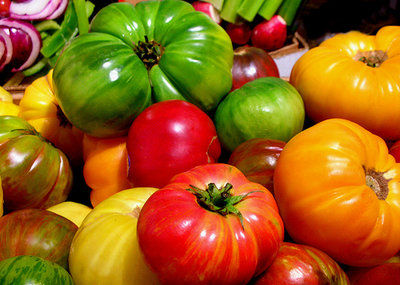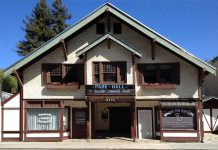
’Tis the season! No, not that season, but the time to propagate and increase your number of plants. Maybe you want to save seed from your heirloom vegetables or start more shrubs inexpensively. How about getting more fruit trees, or even trying your hand at starting your own Christmas tree?
Save your seeds
Let’s start with saving seed. When your vegetables start to produce this summer, you might want to save some of the seeds from the plants that produced the best-tasting, earliest-ripening fruits. These will be strains that are particularly adapted to our climate.
You can only save seed from open-pollinated varieties — those vegetables that are pollinated by bees or wind. All heirloom varieties are open-pollinated. You cannot save seed from F1 hybrids (Filial 1), as their unique traits, such as specific disease resistance and early maturity, are uniform only in the first generation of seed. The traits that come from seed saved from hybrids will not come true when replanted.
Hybrids have their place in the garden, especially if you have a very short or cool season, fewer hours of sunlight than you’d like or a serious nematode problem. But if you enjoy saving seed, it’s fun to identify your best plants to save and use every season.
Become a backyard breeder and develop your own unique cultivars for your garden.
Propagating fruit trees and shrubs
Propagating fruit trees involves more than saving seed, because 99 percent of all seedling trees bear fruit inferior to that produced by the parent. It may be the same species, but it will be unlike the parent tree in flavor, color and date of ripening.
To obtain a true-to-type fruit tree that is a clone of the parent tree, it is necessary to graft or bud on a desired rootstock. The graft wood, called a scion, should be collected in January.
The graft wood, called a scion, should be collected in January. Maybe ask a neighbor for a small, pencil-thin branch of a favorite peach tree, for example, to add to yours. Or you could get a branch to graft onto your tree that would act as a pollinizer for your cherry or apple. You can even graft different fruit trees together if they are compatible, such as an apricot on plum rootstock or almond on peach.
Mid-July to early September is the best time to propagate broadleaf evergreen shrubs. The growth flush is complete, the wood is firm and the leaves have matured. Using cuttings 3 to 6 inches long with a rooting hormone, they will root in 4 to 6 weeks. Ceanothus, manzanita and camellia are just a few of the shrubs that can be rooted this way.
Your own holiday tree
And what about those visions of starting your own Christmas tree? It’s difficult to start a tree from a cutting, unless it’s a very fresh-cut tree and the cutting is taken from current-season growth near the base of the plant. Most evergreen trees used for cut Christmas trees start their lives from seeds. These seedlings grow 1 to 2 feet in a year or two. After transplanting, they become 6-footers in five to eight years. So, if you are patient, you can grow your own from one of those started seedlings. Douglas fir, Scotch pine and noble fir are popular varieties.
There are so many types of plants and methods to increase your collection. Perennials, houseplants, berries and grapes all lend themselves to propagation. If you have a favorite plant or just want to increase your plants inexpensively, there’s a way to do it.
Jan Nelson, a California certified nursery professional at Plant Works in Ben Lomond, will answer questions about gardening in the Santa Cruz Mountains. E-mail her at ja******@*ol.com.











